-
 Nutritional Status of Adult People Living with HIV: A Narrative Review
Nutritional Status of Adult People Living with HIV: A Narrative Review -
 The Role of Cortisol and Dehydroepiandrosterone in Obesity, Pain, and Aging
The Role of Cortisol and Dehydroepiandrosterone in Obesity, Pain, and Aging -
 Oxidative Stress in Benign Prostatic Hyperplasia: Mechanisms, Clinical Relevance and Therapeutic Perspectives
Oxidative Stress in Benign Prostatic Hyperplasia: Mechanisms, Clinical Relevance and Therapeutic Perspectives -
 Managing Depressive Symptoms in Breast Cancer
Managing Depressive Symptoms in Breast Cancer
Journal Description
Diseases
Diseases
is an international, peer-reviewed, open access, multidisciplinary journal which focuses on the latest and outstanding research on diseases and conditions published monthly online by MDPI. The first issue is released in 2013.
- Open Access— free for readers, with article processing charges (APC) paid by authors or their institutions.
- High Visibility: indexed within Scopus, ESCI (Web of Science), PubMed, PMC, CAPlus / SciFinder, and other databases.
- Journal Rank: JCR - Q2 (Medicine, Research and Experimental)
- Rapid Publication: manuscripts are peer-reviewed and a first decision is provided to authors approximately 22.7 days after submission; acceptance to publication is undertaken in 2.5 days (median values for papers published in this journal in the first half of 2025).
- Recognition of Reviewers: reviewers who provide timely, thorough peer-review reports receive vouchers entitling them to a discount on the APC of their next publication in any MDPI journal, in appreciation of the work done.
- Sections: published in 8 topical sections.
Impact Factor:
3.0 (2024);
5-Year Impact Factor:
3.4 (2024)
Latest Articles
Cellular and Molecular Bases for the Application of Polyphenols in the Prevention and Treatment of Cardiovascular Disease
Diseases 2025, 13(7), 221; https://doi.org/10.3390/diseases13070221 (registering DOI) - 15 Jul 2025
Abstract
►
Show Figures
Background: Cardiovascular disease (CVD) is very widespread in countries with a Western-style diet, representing one of the major causes of morbidity. Genetic factors, obesity, diabetes, dyslipidemia, smoking, and ageing are risk factors for CVD outcomes. From a pathogenic point of view, the condition
[...] Read more.
Background: Cardiovascular disease (CVD) is very widespread in countries with a Western-style diet, representing one of the major causes of morbidity. Genetic factors, obesity, diabetes, dyslipidemia, smoking, and ageing are risk factors for CVD outcomes. From a pathogenic point of view, the condition of low-grade inflammation of the arteries leads to endothelial damage and atherosclerosis development. Nowadays, a broad range of drugs is available to treat CVD, but many of them are associated with side effects. Therefore, alternative therapeutic remedies need to be discovered in combination with conventional drugs. A balanced diet rich in fruits and vegetables, e.g., the Mediterranean diet, has been shown to lower the incidence of CVD. Plant-derived polyphenols are ingested in food, and these compounds can exert beneficial effects on human health, such as antioxidant and anti-inflammatory activities. Objective: In the present review, the cellular and molecular bases of the beneficial effects of polyphenols in the prevention and treatment of CVD will be pointed out. Methods: This review has been conducted on the basis of a literature review spanning mainly the last two decades. Results: We found that an increased dietary intake of polyphenols is associated with a parallel decrease in chronic disease incidence, including CVD. Conclusion: Despite a plethora of preclinical studies, more clinical trials are needed for a more appropriate treatment of CVD with polyphenols.
Full article
Open AccessBrief Report
Myxoid Liposarcoma of the Thigh in Early Puerperium—Rare Case Report and Narrative Review
by
Tomasz Machałowski, Piotr Gutowski, Edyta Zagrodnik, Aleksandra Godlewska, Katarzyna Śmieja, Oliwia Kawałek, Anna Grzymała-Figura, Sylwester Michał Ciećwież, Katarzyna Gross-Kępińska, Małgorzata Szczuko and Maciej Ziętek
Diseases 2025, 13(7), 220; https://doi.org/10.3390/diseases13070220 (registering DOI) - 14 Jul 2025
Abstract
Background: Liposarcoma (LPS) is a rare malignant tumor, but it is also one of the most common adult soft-tissue sarcomas. Myxoid liposarcoma (MLPS) accounts for 30% of all LPS cases. Diagnosis during pregnancy and the puerperium is very rarely reported, and only a
[...] Read more.
Background: Liposarcoma (LPS) is a rare malignant tumor, but it is also one of the most common adult soft-tissue sarcomas. Myxoid liposarcoma (MLPS) accounts for 30% of all LPS cases. Diagnosis during pregnancy and the puerperium is very rarely reported, and only a few cases have been reported in the thigh. Case presentation: We report the case of a 36-year-old female patient on the 11th day of the puerperium after a cesarean section. The patient presented to the gynecology ward owing to the sudden appearance of a tumor in the medial part of her right thigh. The lesion was non-painful, mobile, soft, approximately 20 cm in diameter, and protruded above the level of the rest of the thigh surface. A suspicion of hematoma was raised. The final diagnosis was high-grade MLPS. Conclusions: An MLPS diagnosis is uncommon in female patients and even rarer during pregnancy. This case represents a novel occurrence, as the first instance in which symptoms manifested during the puerperium. Proper treatment and early detection could improve disease outcomes.
Full article
(This article belongs to the Special Issue ‘Rare Syndromes: Diagnosis and Treatment’ in 2024–2026)
►▼
Show Figures
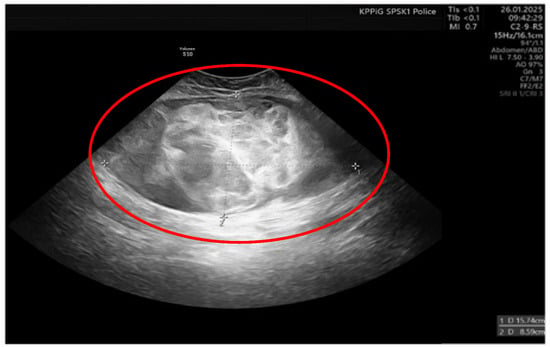
Figure 1
Open AccessArticle
The Association of VDR, CYP2R1, and GC Gene Polymorphisms, Dietary Intake, and BMI in Regulating Vitamin D Status
by
Carmina Mariana Stroia, Annamaria Pallag, Maria Vrânceanu, David de Lorenzo, Keith Anthony Grimaldi, Csaba Robert Pallag, Kinga Vindis, Diana Bei, Cristina Burlou-Nagy (Fati) and Timea Claudia Ghitea
Diseases 2025, 13(7), 219; https://doi.org/10.3390/diseases13070219 (registering DOI) - 14 Jul 2025
Abstract
Vitamin D plays a crucial role in bone health and immune function, with serum 25(OH)D levels influenced by genetic, dietary, and metabolic factors. Background/Objectives: This study investigated the impact of VDR rs731236, CYP2R1 rs10741657, and GC rs2282679 polymorphisms, body mass index (BMI), and
[...] Read more.
Vitamin D plays a crucial role in bone health and immune function, with serum 25(OH)D levels influenced by genetic, dietary, and metabolic factors. Background/Objectives: This study investigated the impact of VDR rs731236, CYP2R1 rs10741657, and GC rs2282679 polymorphisms, body mass index (BMI), and dietary vitamin D intake on vitamin D status. Methods: A total of 230 adults were classified into four BMI categories: normal weight (NW), overweight (OW), obesity class I (OB), and obesity class II/III (OP). Participants completed a Food Frequency Questionnaire (FFQ) and a 7-day Food Frequency Diary (FFD). Genotyping was performed using TaqMan assays, and serum 25(OH)D was quantified via spectrophotometry. Statistical analyses included ANOVA and multiple linear regression. Results: The VDR rs731236 CC genotype, CYP2R1 rs10741657 AG/GG, and GC rs2282679 AC/CC were associated with lower serum vitamin D levels. A higher BMI was significantly correlated with reduced serum 25(OH)D (p < 0.001), with BMI emerging as the strongest predictor of vitamin D status. FFQ-based dietary intake showed a modest positive correlation with 25(OH)D (r = 0.47, p < 0.001). Conclusions: BMI and genetic variants in VDR, CYP2R1, and GC significantly influence vitamin D metabolism. Personalized interventions addressing genetic predispositions and weight management may improve vitamin D status.
Full article
(This article belongs to the Special Issue Metabolic Disorders: Insights into Pathogenesis and Novel Therapeutic Strategies)
►▼
Show Figures
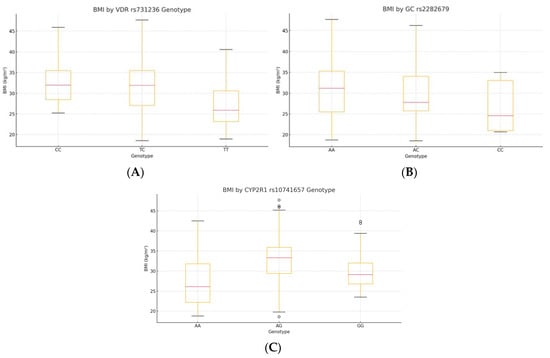
Figure 1
Open AccessArticle
From Blood to Outcome: Inflammatory Biomarkers in Rectal Cancer Surgery at a Romanian Tertiary Hospital
by
Georgiana Viorica Moise, Catalin Vladut Ionut Feier, Vasile Gaborean, Alaviana Monique Faur, Vladut Iosif Rus and Calin Muntean
Diseases 2025, 13(7), 218; https://doi.org/10.3390/diseases13070218 - 13 Jul 2025
Abstract
Background: Systemic inflammatory markers have emerged as accessible and reproducible tools for oncologic risk stratification, yet their prognostic value in rectal cancer remains incompletely defined, particularly in acute surgical settings. This study aimed to assess six inflammation-based indices—NLR, PLR, MLR, SII, SIRI, and
[...] Read more.
Background: Systemic inflammatory markers have emerged as accessible and reproducible tools for oncologic risk stratification, yet their prognostic value in rectal cancer remains incompletely defined, particularly in acute surgical settings. This study aimed to assess six inflammation-based indices—NLR, PLR, MLR, SII, SIRI, and AISI—in relation to tumor stage, recurrence, and outcomes among patients undergoing emergency versus elective resection for rectal cancer. Methods: We retrospectively evaluated 174 patients treated between 2018 and 2024. Pre-treatment blood counts were used to calculate inflammatory indices. Clinical and pathological parameters were correlated with biomarker levels using univariate and multivariate analyses. Results: Pre-treatment inflammation markers were significantly elevated in patients requiring emergency surgery (e.g., NLR: 3.34 vs. 2.4, p = 0.001; PLR: 204.1 vs. 137.8, p < 0.001; SII: 1008 vs. 693, p = 0.007), reflecting advanced tumor biology and immune activation. Notably, these patients also had higher rates of stage IV disease (p = 0.029) and permanent stoma (p = 0.002). Post-treatment, recurrence was paradoxically associated with significantly lower levels of SII (p = 0.021), AISI (p = 0.036), and PLR (p = 0.003), suggesting a potential role for immune exhaustion rather than hyperinflammation in early relapse. Conclusions: Inflammatory indices provide valuable insights into both tumor local invasion and host immune status in rectal cancer. Their integration into perioperative assessment could improve prognostication, particularly in emergency presentations. Post-treatment suppression of these markers may identify patients at high risk for recurrence despite initial curative intent.
Full article
(This article belongs to the Section Oncology)
Open AccessArticle
Prognostic Role of TSH Within Euthyroid T2DM Patients with Retinopathy: A 3-Year Cohort Study
by
Nilgun Tan Tabakoglu and Mehmet Celik
Diseases 2025, 13(7), 217; https://doi.org/10.3390/diseases13070217 - 12 Jul 2025
Abstract
►▼
Show Figures
Background/Objectives: We aimed to determine how baseline TSH levels relate to clinical outcomes over a three-year follow-up in euthyroid patients with T2DR. Methods: This single-center retrospective cohort study included 363 euthyroid T2DR patients who were followed for three years after baseline TSH measurement.
[...] Read more.
Background/Objectives: We aimed to determine how baseline TSH levels relate to clinical outcomes over a three-year follow-up in euthyroid patients with T2DR. Methods: This single-center retrospective cohort study included 363 euthyroid T2DR patients who were followed for three years after baseline TSH measurement. Patients were stratified into tertiles based on TSH values belonging to the standard clinical limits (0.35–4.50 mIU/L). Binary and multivariate logistic regression analyses, along with non-linear modeling, were used to evaluate the prognostic impact of TSH and its interaction with age on mortality. The study adhered to the STROBE guidelines. Results: In the first year of follow-up, Group 1 (TSH 0.35–1.24 mIU/L) had significantly higher rates of mortality and combined outcomes compared to Group 2 (TSH 1.24–1.94 mIU/L; p = 0.025 and p = 0.041, respectively). Group 2 had a lower risk (OR for mortality = 0.349, p = 0.004; OR for combined outcome = 0.358, p = 0.007). Between TSH and TSH tertiles, a non-linear, inverted U-shaped relationship was observed, with the lowest mortality risk near 2.0 mIU/L. A significant interaction between TSH and age was found for third-year mortality (p = 0.016). Conclusions: TSH values showed a non-linear association with outcomes in euthyroid T2DR patients. Group 2 was linked to the lowest risk. Given the significantly higher mortality and combined complications identified within Group 1, closer monitoring and individualized follow-up strategies may be warranted for these patients. Additionally, TSH’s impact on long-term mortality increased with age, supporting its use alongside age for risk stratification in T2DR.
Full article
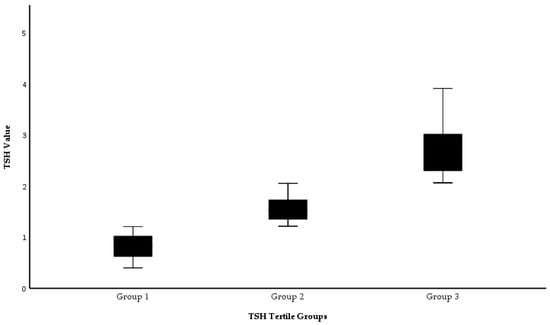
Figure 1
Open AccessArticle
Role of Renin–Angiotensin System and Macrophages in Breast Cancer Microenvironment
by
Abir Abdullah Alamro, Moudhi Abdullah Almutlaq, Amani Ahmed Alghamdi, Atekah Hazzaa Alshammari, Eman Alshehri and Saba Abdi
Diseases 2025, 13(7), 216; https://doi.org/10.3390/diseases13070216 - 10 Jul 2025
Abstract
Background/Objectives: The renin–angiotensin system (RAS) is well-established as a moderator of cardiovascular equilibrium and blood pressure. Nevertheless, growing evidence indicates that angiotensin II (Ang II), the principal RAS effector peptide, together with additional constituents, is involved in various malignancies. Since the immune system
[...] Read more.
Background/Objectives: The renin–angiotensin system (RAS) is well-established as a moderator of cardiovascular equilibrium and blood pressure. Nevertheless, growing evidence indicates that angiotensin II (Ang II), the principal RAS effector peptide, together with additional constituents, is involved in various malignancies. Since the immune system is an important aspect in tumor development, this study sought to investigate the role of Ang II in the crosstalk between tumor-associated macrophages (TAMs) and breast cancer cells in the tumor microenvironment (TME). Methods: We treated THP-1-like macrophages with 100 nM Ang II for 24 h. The culture media thus obtained was used as conditioned media and applied at 50% on MCF-7 and MDA-MB-231 breast cancer cell lines. The effects of the conditioned media on cancer cell lines were then investigated by various methods such as a cell proliferation assay, migration assay, polarization assay, and by the detection of apoptosis and reactive oxygen species (ROS) generation. Results: We demonstrated that in vitro Ang II promotes macrophage polarization toward proinflammatory M1-like macrophages and anti-inflammatory M2-like macrophages. Interestingly, Ang II, through macrophages, showed varied effects on different breast cancer cell lines, promoting tumor growth and progression in MCF-7 while inhibiting tumor growth and progression in MDA-MB-23. Conclusions: This study has provided clear evidence that Ang II in the TME modulates TAM polarization and secretions, leading to different effects based on the type of breast cancer.
Full article
(This article belongs to the Section Oncology)
►▼
Show Figures
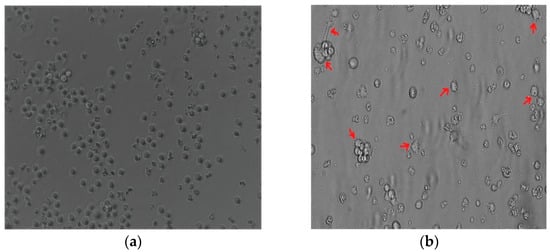
Figure 1
Open AccessSystematic Review
Optimizing Stereotactic Intracranial Neoplasm Treatment: A Systematic Review of PET Integration with Gamma Knife Radiosurgery
by
Robert C. Subtirelu, Eric M. Teichner, Milo Writer, Kevin Bryan, Shiv Patil, Talha Khan, Lancelot Herpin, Raj N. Patel, Emily Christner, Chitra Parikh, Thomas Werner, Abass Alavi and Mona-Elisabeth Revheim
Diseases 2025, 13(7), 215; https://doi.org/10.3390/diseases13070215 - 10 Jul 2025
Abstract
►▼
Show Figures
Objective: Traditional imaging modalities for the planning of Gamma Knife radiosurgery (GKRS) are non-specific and do not accurately delineate intracranial neoplasms. This study aimed to evaluate the utility of positron emission tomography (PET) for the planning of GKRS for intracranial neoplasms (ICNs) and
[...] Read more.
Objective: Traditional imaging modalities for the planning of Gamma Knife radiosurgery (GKRS) are non-specific and do not accurately delineate intracranial neoplasms. This study aimed to evaluate the utility of positron emission tomography (PET) for the planning of GKRS for intracranial neoplasms (ICNs) and the post-GKRS applications of PET for patient care. Methods: PubMed, Scopus, and ScienceDirect were searched in order to assemble relevant studies regarding the uses of PET in conjunction with GKRS for ICN treatment. PRISMA (Preferred Reporting Items for Systematic Reviews and Meta-Analyses) guidelines were followed to identify relevant studies on the use of PET in conjunction with GKRS. Particular emphasis was placed on review articles and medical research investigating tumor delineation and post-operative care. Relevant studies were selected and assessed based on quality measures, including study design, sample size, and significance. Inclusion and exclusion criteria were used to examine the yield of the initial search (n = 105). After a secondary review, the included results were identified (n = 50). Results: This study revealed that PET imaging is highly accurate for the planning of GKRS. In fact, many cases indicate that it is more specific than traditional imaging modalities. PET is also capable of complementing traditional imaging techniques through combination imaging. This showed significant efficacy for the planning of GKRS for ICNs. Conclusions: While PET shows a multitude of applications for the treatment of ICNs with GKRS, further research is necessary to assemble a complete set of clinical guidelines for treatment specifications. Importantly, future studies need a greater standardization of methods and expanded trials with a multitude of radiotracers.
Full article
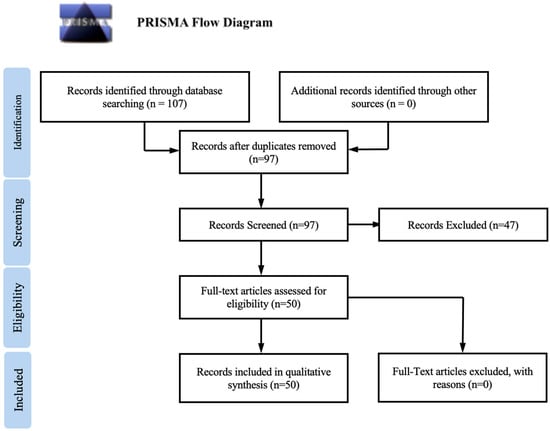
Figure 1
Open AccessReview
Neoadjuvant Stereotactic Ablative Radiotherapy in Pancreatic Ductal Adenocarcinoma: A Review of Perioperative and Long-Term Outcomes
by
Robert Michael O’Connell and Emir Hoti
Diseases 2025, 13(7), 214; https://doi.org/10.3390/diseases13070214 - 8 Jul 2025
Abstract
The incidence of pancreatic ductal adenocarcinoma (PDAC) is continuing to rise globally, while overall survival continues to be poor. Margin-negative (R0) surgical resection is essential to improve patient outcomes. With increasing understanding of the importance of anatomy and biology to establishing the resectability
[...] Read more.
The incidence of pancreatic ductal adenocarcinoma (PDAC) is continuing to rise globally, while overall survival continues to be poor. Margin-negative (R0) surgical resection is essential to improve patient outcomes. With increasing understanding of the importance of anatomy and biology to establishing the resectability of PDAC, neoadjuvant therapy (NAT) has emerged as an important strategy to achieve an R0 resection, particularly for those with borderline resectable (BR-PDAC) and locally advanced disease (LA-PDAC). However, despite the multiple randomised controlled trials (RCTs) published in recent years, the optimum regime has yet to be fully established. The role of neoadjuvant chemoradiation therapy (CRT) remains controversial, possibly allowing for improved local disease control at a potential cost of interrupting systemic treatment. The emergence of stereotactic ablative radiotherapy (SABR), in place of conventional radiation therapy, improves patient tolerance of NAT and may improve local tumour control for patients with PDAC during limited fractions, minimising systemic therapy interruption. A particular niche for SABR may be as part of NAT for LA-PDAC, potentially converting a minority of patients with favourable biology to allow for resection. While pancreaticoduodenectomy can be technically challenging following NAT, there is no difference in the rate of major morbidity or mortality post operatively. Indeed, post-operative pancreatic fistula (POPF) rates may be lower following NAT. Overall, however, evidence for SABR in a neoadjuvant setting for BR- and LA-PDAC remains sparse.
Full article
Open AccessArticle
Uric Acid Causes Pancreatic β Cell Death and Dysfunction via Modulating CHOP-Mediated Endoplasmic Reticulum Stress Pathways
by
Xueyan Li, Yunan Chen, Lei Su and Jialin He
Diseases 2025, 13(7), 213; https://doi.org/10.3390/diseases13070213 - 7 Jul 2025
Abstract
►▼
Show Figures
Background: Uric acid has been proposed as a diabetogenic factor while its effect on pancreatic β cell function remains elusive. This study aimed to explore the impact of uric acid levels on β cell function and delineate its underlying molecular mechanisms. Methods: Both
[...] Read more.
Background: Uric acid has been proposed as a diabetogenic factor while its effect on pancreatic β cell function remains elusive. This study aimed to explore the impact of uric acid levels on β cell function and delineate its underlying molecular mechanisms. Methods: Both in vivo hyperuricemia diet-induced mouse models and in vitro pancreatic β cell models were utilized. Results: A progressive decrease in glucose-stimulated insulin secretion and increase in β cell apoptosis were observed in the hyperuricemia diet-induced mouse model, and these could be effectively restored by urate-lowering therapy. The dose- and time-dependent direct effects of uric acid on β cell apoptosis and insulin secretion were further confirmed in both INS-1E cells and primary isolated islets. Mechanistically, the primary role of expression of the endoplasmic reticulum stress marker C/EBP homologous protein (CHOP) was detected by RNA sequencing, and the inflammatory factor NLRP3 and pro-apoptotic genes were significantly upregulated by uric acid treatment. Conclusions: Together, our findings indicate a direct crosstalk between uric acid and β cells via CHOP/NLRP3 pathway, providing a new understanding of the diabetogenic effect of uric acid.
Full article

Figure 1
Open AccessSystematic Review
Analgesic and Neuroprotective Roles of Dexmedetomidine in Spine Surgery: A Systematic Review
by
Spyridoula Roberta Afrati, Ioanna Lianou, Angelos Kaspiris, Vasileios Marougklianis, Anastasia Kotanidou and Spiros G. Pneumaticos
Diseases 2025, 13(7), 212; https://doi.org/10.3390/diseases13070212 - 6 Jul 2025
Abstract
►▼
Show Figures
Objectives: The incidence of postoperative pain in patients that undergo spinal interventions is significantly increased, affecting their functional outcomes and quality of life. Dexmedetomidine (DEX) belongs to the category of centrally acting nonopioid agents with highly selective α2 adrenoreceptor agonist activity that are
[...] Read more.
Objectives: The incidence of postoperative pain in patients that undergo spinal interventions is significantly increased, affecting their functional outcomes and quality of life. Dexmedetomidine (DEX) belongs to the category of centrally acting nonopioid agents with highly selective α2 adrenoreceptor agonist activity that are frequently applied in spinal surgery based on its antinociceptive and anxiolytic properties. Although many studies displayed the effectiveness of DEX in postoperative pain management, the impact of DEX on functional improvement after spinal surgeries is still debatable. Purpose: This systematic review focuses on the intraoperative and postoperative role of dexmedetomidine (DEX) as an analgesic agent in elective and emergency adult spine surgery. Methods: An electronic literature review search was conducted via Web of Science and PubMed to assess the impact of DEX on postoperative pain management, postoperative delirium (POD), and postoperative cognitive dysfunction (POCD). Discussion: Twenty-one studies were retrieved, three of which were review articles. The effects of DEX were studied for up to 48 h postoperatively. In most cases, its administration was associated with reduced intraoperative and postoperative opioid consumption. However, findings on pain control were less conclusive due to heterogeneity in dosing protocols, concomitant medications, the timing of administration, and pain scoring systems. DEX appears to reduce the incidence of POD and POCD, particularly when used in combination with other drugs. Conclusions: Although the present study supports that the intraoperative administration of dexmedetomidine decreases the pain intensity and/or opioid consumption as well as the development of POD and POCD in patients undergoing spinal surgeries during the first 24 h postoperatively, the current literature should be expanded to allow for the safe generalisation of findings over longer follow-up periods. Further research into the neuroprotective, analgesic, and anti-inflammatory roles of DEX is warranted.
Full article
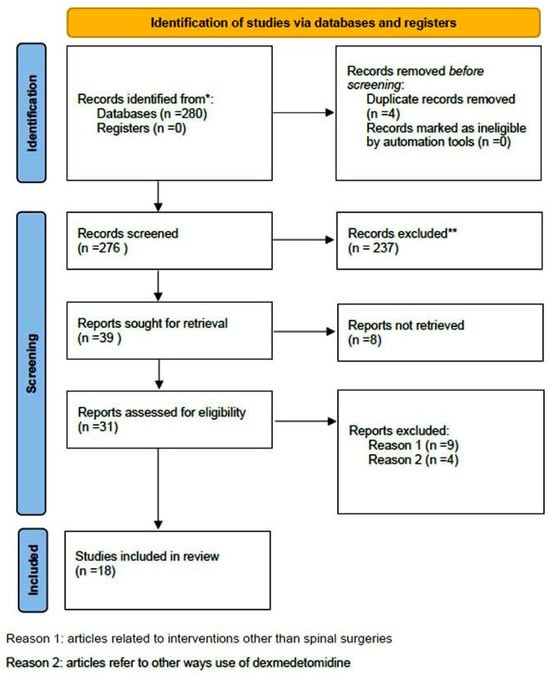
Figure 1
Open AccessArticle
Impact of Race on Admission, Clinical Outcomes, and Disposition in Cholangiocarcinoma: Insights from the National Inpatient Database
by
Tijin A. Mathew, Teresa M. Varghese, Nithya Krishnakumaran, George M. Varghese, Khwaja S. Haq, Akshita Khosla, Rojymon Jacob and Gina Vaccaro
Diseases 2025, 13(7), 211; https://doi.org/10.3390/diseases13070211 - 4 Jul 2025
Abstract
Background: Cholangiocarcinoma, malignancies arising from the intrahepatic and extrahepatic bile ducts, has increased in incidence in the United States over the past few decades. The reported incidence of cholangiocarcinomas is high, particularly in specific racial groups such as Asian and Pacific Islander patients.
[...] Read more.
Background: Cholangiocarcinoma, malignancies arising from the intrahepatic and extrahepatic bile ducts, has increased in incidence in the United States over the past few decades. The reported incidence of cholangiocarcinomas is high, particularly in specific racial groups such as Asian and Pacific Islander patients. Race also significantly impacts disparities in healthcare utilization and clinical outcomes. Our study focused on the impact of race on admission, clinical outcomes, and disposition of cholangiocarcinoma. Methods: We performed a retrospective analysis of cholangiocarcinoma-related hospital admissions, using the National Inpatient Sample for the year 2022. Patients were stratified according to race into the following groups: White, African American, Hispanic, Asian or Pacific Islander, Native American, and Other. The data analysis was performed using STATA/BE version 18.5. Univariable and multivariable logistic regression models were applied to evaluate the relationship between race and clinical and healthcare utilization outcomes. Results: In 2022, 7479 hospitalizations were recorded for cholangiocarcinoma in the United States. Among these, 65.99% were White, 13.27% Hispanic, and 10.13% African American. There was a statistically significant difference in gender distribution across racial groups (p < 0.001), with males comprising the majority in all groups. Males outnumbered females in all racial groups except among the Hispanic group. Significant racial disparities in mortality were observed, with White patients showing a mortality rate of 6.69%, compared to higher rates among African American (9.76%), Native American (8.51%), and Asian or Pacific Islander (8.09%) patients, while Hispanic (5.04%) and Other (5.88%) groups had lower rates (p < 0.001). Conclusions: The study underscores the racial disparities among cholangiocarcinoma hospitalizations, with African American, Native American, and Asian patients facing disproportionately higher mortality and poorer in-hospital outcomes compared to White patients. This analysis highlights the healthcare strategies and policy reforms to promote equitable treatment by mitigating these disparities and to improve cholangiocarcinoma outcomes.
Full article
(This article belongs to the Section Oncology)
►▼
Show Figures
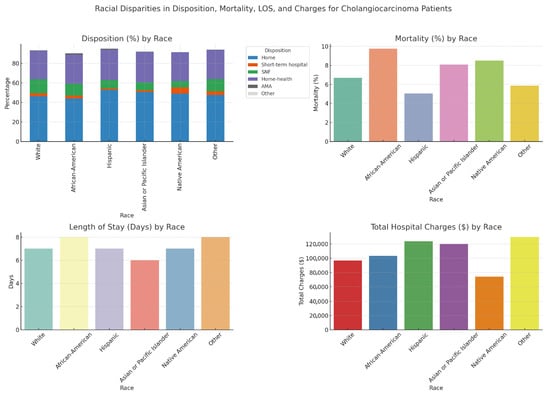
Figure 1
Open AccessArticle
Fibrin Monomer and Systemic Lupus Erythematosus Reactivation During Pregnancy: A Retrospective Study
by
Tran Thi Kieu My, Hoang Thi Ha, Nguyen Huu Truong, Dao Thi Thiet, Nguyen Khanh Ha, Tran Dang Xoay, Linus Olson and Bach Quoc Khanh
Diseases 2025, 13(7), 210; https://doi.org/10.3390/diseases13070210 - 3 Jul 2025
Abstract
►▼
Show Figures
Background: Pregnancies in patients with systemic lupus erythematosus (SLE) have always been considered high-risk. D-dimer is known for its role in excluding the diagnosis of thrombosis and has been associated with lupus reactivation; however, its physiological elevation during pregnancy limits its utility in
[...] Read more.
Background: Pregnancies in patients with systemic lupus erythematosus (SLE) have always been considered high-risk. D-dimer is known for its role in excluding the diagnosis of thrombosis and has been associated with lupus reactivation; however, its physiological elevation during pregnancy limits its utility in this population. Fibrin monomer (FM) has been shown in multiple studies to remain stable in pregnant women. The objectives of this study were to evaluate D-dimer and FM levels, as well as to assess the role of FM in SLE activity during pregnancy. Methods: The subjects included 76 pregnant women with SLE diagnosed according to the Systemic Lupus International Collaborating Clinics (SLICC) 2012 criteria. The assessment of disease activity was in accordance with the Systemic Lupus Erythematosus Pregnancy Disease Activity Index (SLEPDAI). Results: The log10-transformed D-dimer (LtDD) and FM (LtFM) concentrations in the pregnant women with lupus were 1.229 (0.722–1.953) and 4.17 (3.01–5.34) µg/mL, respectively. A multivariate regression indicated that 59.1% of the variation in LtDD was influenced by the gestational age and SLEPDAI, while only 18.3% of the fluctuation in LtFM was affected by these factors. The concentration of LtFM was an independent factor in predicting SLE flare and disease activity level according to the SLEPDAI in pregnant women. Conclusions: In conclusion, this study’s findings suggest that elevated levels of both D-dimer and FM were observed in pregnant patients with SLE. However, only FM levels can be used as a prognostic factor in assessing the risk of SLE reactivation during pregnancy.
Full article
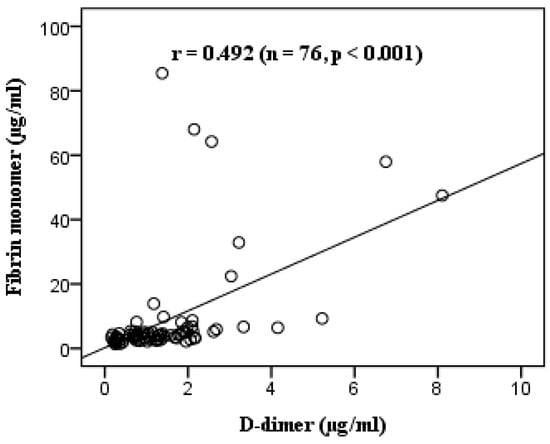
Figure 1
Open AccessArticle
Persistent Changes in Hormones and Growth Factors Involved in Ageing in Patients That Recovered from Severe COVID-19
by
Alice Cuchi-Cabral, André C. Palma, Guilherme A. Nogueira, Henrique Ceretta Oliveira, Suzimar F. Benato Fusco, Maria L. Moretti, Licio A. Velloso and Eliana P. Araujo
Diseases 2025, 13(7), 209; https://doi.org/10.3390/diseases13070209 - 3 Jul 2025
Abstract
►▼
Show Figures
Background: The coronavirus disease-19 pandemic affected millions of people and its long-term impact on the health of survivors is under evaluation. Objectives: In this study, we hypothesized that severe coronavirus disease-19 could promote long-term changes in the blood levels of hormones and growth
[...] Read more.
Background: The coronavirus disease-19 pandemic affected millions of people and its long-term impact on the health of survivors is under evaluation. Objectives: In this study, we hypothesized that severe coronavirus disease-19 could promote long-term changes in the blood levels of hormones and growth factors known to be involved in the regulation of ageing. Methods: We evaluated 49 patients that recovered from severe COVID-19 and compared them with matched controls that were never infected by the virus. The blood levels of growth hormone, insulin-like growth factor-1, insulin, brain-derived neurotrophic factor, nerve growth factor, oxytocin, ghrelin, platelet-derived growth factor, fibroblast growth factor-1, and transforming growth factor-beta were determined using enzyme-linked immunosorbent assays. Results: After six months of recovery, patients presented reduced blood levels of growth hormone, insulin-like growth factor-1, brain-derived neurotrophic factor, and platelet-derived growth factor. Fifteen months after, the reductions in the blood levels of all four hormones/growth factors persisted. Conclusions: Our study advances the field by identifying hormones and growth factors involved in ageing that undergo persistent changes in patients that recover from severe COVID-19. Further studies could explore the potential of the identified hormones/growth factors as therapeutic targets for the late complications and accelerated ageing that may affect patients recovering from severe COVID-19.
Full article
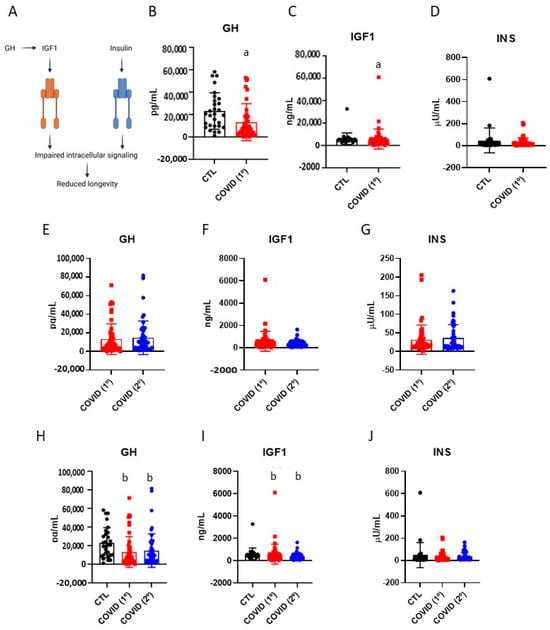
Figure 1
Open AccessReview
Descriptive Analysis of Reported Adverse Events Associated with Vitiligo Medications Using FDA Adverse Event Reporting System (FAERS) Databases 2013–2023
by
Saleh F. Alqifari, Musaab Habibulla Gari, Jeff J. Guo, Shoroq Alamin, Aya K. Esmail, Abdullah K. Esmail, Heba R. Hamad, Ahmed Aljabri, Amirah M. Alatawi, Laila A. Albishi, Mohammed Olaythah Alraddadi and Helal F. Hetta
Diseases 2025, 13(7), 208; https://doi.org/10.3390/diseases13070208 - 2 Jul 2025
Abstract
Vitiligo, an autoimmune disorder causing depigmented skin patches, includes two types, segmental (SV) and non-segmental (NSV). Previously, NSV was off-label treated using Calcineurine inhibitors (Tacrolimus and Pimecrolimus). In 2022, the FDA approved Ruxolitinib cream, targeting the JAK/STAT pathway for NSV treatment based on
[...] Read more.
Vitiligo, an autoimmune disorder causing depigmented skin patches, includes two types, segmental (SV) and non-segmental (NSV). Previously, NSV was off-label treated using Calcineurine inhibitors (Tacrolimus and Pimecrolimus). In 2022, the FDA approved Ruxolitinib cream, targeting the JAK/STAT pathway for NSV treatment based on promising results. This research conducts a retrospective descriptive safety assessment of Tacrolimus, Pimecrolimus, and Ruxolitinib safety in vitiligo treatment, utilizing the FDA Adverse Event Reporting System (FAERS) database spanning the period from 2013 to 2023 and including patients aged 2 years and above, encompassing both brand and generic names. A total of 844 adverse event reports involving 388 patients were extracted and categorized into dermatological and systemic groups for analysis. Tacrolimus resulted in 12 hospitalizations, two life-threatening events, and four disabilities. Pimecrolimus exhibited urticaria and pigmentation disorders, with tooth fracture as the primary systemic event. Pericarditis was the predominant systemic side effect of Ruxolitinib, followed by anemia, headache, and urosepsis. Local dermatological side effects reported were generally mild, not warranting treatment cessation. In conclusion, vitiligo significantly impacts patients’ psychological well-being, necessitating continuous post-marketing safety monitoring for topical medications.
Full article
Open AccessReview
Hepatocellular Carcinoma: A Comprehensive Review
by
Nisar Amin, Javaria Anwar, Abdullahi Sulaiman, Nadia Nikolaeva Naumova and Nadeem Anwar
Diseases 2025, 13(7), 207; https://doi.org/10.3390/diseases13070207 - 2 Jul 2025
Abstract
Hepatocellular carcinoma (HCC) is the sixth most common malignancy globally and remains one of the leading causes of cancer-related mortality. Its incidence continues to rise worldwide, and it is currently the fastest-growing cancer by incidence in the United States. HCC most often arises
[...] Read more.
Hepatocellular carcinoma (HCC) is the sixth most common malignancy globally and remains one of the leading causes of cancer-related mortality. Its incidence continues to rise worldwide, and it is currently the fastest-growing cancer by incidence in the United States. HCC most often arises in the context of chronic liver disease, particularly cirrhosis. While chronic viral hepatitis (hepatitis B and C) has traditionally been the primary etiologic factor, recent advances in antiviral therapies and prevention strategies have shifted the epidemiological landscape. Metabolic dysfunction-associated steatotic liver disease (MASLD) and alcohol-related liver disease are increasingly prominent risk factors, especially in Western populations. This shift underscores the need for targeted risk factor modification, improved early detection, and enhanced surveillance protocols. The management of HCC necessitates a multidisciplinary approach, incorporating locoregional therapies, surgical resection, liver transplantation, and systemic therapies for advanced-stage disease. Recent advances in systemic treatments, including immune checkpoint inhibitors and combination therapies, have transformed the therapeutic landscape. Despite these developments, significant challenges persist in optimizing treatment, identifying predictive biomarkers, and personalizing therapy. Ongoing research is focused on refining molecular classifications and advancing precision medicine strategies to improve outcomes. This review provides a comprehensive overview of the etiology, surveillance strategies, diagnostic approaches, molecular features, and current treatment modalities for HCC.
Full article
(This article belongs to the Special Issue Viral Hepatitis: Diagnosis, Treatment and Management)
►▼
Show Figures

Figure 1
Open AccessArticle
CD79A and IL7R mRNA Levels in the Cerebrospinal Fluid of Adults with Acute B-Cell Lymphoblastic Leukemia: A Pilot Study
by
Andrea Iracema Milán Salvatierra, Juan Carlos Bravata Alcántara, Víctor Manuel Alvarado Castro, Estibeyesbo Said Plascencia Nieto, Faustino Cruz Leyto, Mónica Tejeda Romero, Jorge Cruz Rico, Bogar Pineda Terreros, Sandra López Palafox, Adriana Jiménez, Juan Ramón Padilla Mendoza, José Bonilla Delgado, Catalina Flores-Maldonado and Enoc Mariano Cortés Malagón
Diseases 2025, 13(7), 206; https://doi.org/10.3390/diseases13070206 - 1 Jul 2025
Abstract
►▼
Show Figures
Background/Objectives: In adults with B-cell acute lymphoblastic leukemia (B-ALL), central nervous system (CNS) involvement represents a significant clinical challenge due to its association with adverse outcomes. Infiltration of blast cells into the CNS is primarily detected via cerebrospinal fluid (CSF) microscopy, the current
[...] Read more.
Background/Objectives: In adults with B-cell acute lymphoblastic leukemia (B-ALL), central nervous system (CNS) involvement represents a significant clinical challenge due to its association with adverse outcomes. Infiltration of blast cells into the CNS is primarily detected via cerebrospinal fluid (CSF) microscopy, the current gold standard diagnostic method, although it has limitations in terms of sensitivity. Quantitative polymerase chain reaction (qPCR) offers higher sensitivity and can support the diagnosis of CNS infiltration. This study assessed the mRNA expression levels of CD79A and IL7R in CSF to evaluate their potential for detecting CNS involvement in adults with B-ALL. Methods: CSF samples were collected from adults with B-ALL. The classification criteria for CNS Leukemia (CNS status) were used to evaluate CNS involvement. RNA was extracted from the CSF, and quantitative reverse transcription PCR (RT-qPCR) was used to measure the CD79A and IL7R mRNA expression levels. Results: A total of 19 treatment-naïve adult patients with B-ALL were enrolled over a 19-month period. Four (21%) patients had CNS3 status. Four (21%) patients had CNS3 status. The results also showed that the expression levels of CD79A and IL7R mRNA were significantly higher (median fold change = 0.62 and 2.12, p < 0.05, respectively) in the group with CNS3. Furthermore, using the Haldane-Anscombe correction and Fisher’s exact test, we demonstrated an association between IL7R and CNS3 expression (odds ratio = ∞, due to zero CNS+ in the IL7R group, p < 0.05). Conclusions: CD79A and IL7R mRNA levels in CSF could be potential biomarkers for detecting CNS involvement in adult patients with B-ALL.
Full article

Figure 1
Open AccessArticle
Salmonella Typhi-Exposed Placentae: Chorionic Villi Histomorphology and Neonatal Birthweight
by
Patience B. Tetteh-Quarcoo, Joana Twasam, Kevin Kofi Adutwum-Ofosu, John Ahenkorah, Bismarck Afedo Hottor, Nicholas T. K. D. Dayie, Peter Ofori Appiah, Emmanuel Afutu, Fleischer C. N. Kotey, Emilia Asuquo Udofia, Nii Koney-Kwaku Koney, Benjamin Arko-Boham and Eric S. Donkor
Diseases 2025, 13(7), 205; https://doi.org/10.3390/diseases13070205 - 30 Jun 2025
Abstract
►▼
Show Figures
Background: Salmonella infections impose a substantial global health burden, with an estimated 95.1 million cases occurring annually. Pregnant women exhibit a heightened vulnerability due to pregnancy-specific immune adaptations and dietary habits that increase their risk of Salmonella exposure, facilitating possible damage to the
[...] Read more.
Background: Salmonella infections impose a substantial global health burden, with an estimated 95.1 million cases occurring annually. Pregnant women exhibit a heightened vulnerability due to pregnancy-specific immune adaptations and dietary habits that increase their risk of Salmonella exposure, facilitating possible damage to the placental barrier. Despite this significant burden, Salmonella-associated placental pathology remains poorly understood, particularly its impact on foetal development through microstructural alterations. Aim: This study utilised stereology to assess histomorphological and functional alterations in term placentae of Salmonella Typhi-exposed placentae, compared to unexposed controls. Methods: A hospital-based case-control study was conducted in Ghana. Of 237 screened women, 62 placentae were selected for analysis, comprising 31 Salmonella-exposed cases (IgG/IgM-positive in placental and cord blood) and 31 gestational age-matched controls (IgG/IgM-negative). Placental tissues were processed for histology and stereology. Neonatal birthweights were also compared. Results: Stereological assessment revealed significantly higher mean volume densities of syncytial knots in the study group (0.4755 ± 0.04) compared to the controls (0.3342 ± 0.04, p = 0.0219). Syncytial denudation was increased in the study group (0.8113 ± 0.09) relative to the controls (0.1975 ± 0.08, p < 0.0001). Foetal capillary volume density was also significantly elevated in the study group (5.1010 ± 0.32) compared to the controls (3.562 ± 0.47, p < 0.0001). In contrast, intervillous space volume was significantly reduced in the study group (9.5810 ± 0.05) compared to the controls (11.593 ± 0.26, p = 0.0053). Neonates of exposed mothers showed a non-significant reduction in birthweight. Conclusion: Salmonella Typhi exposure in pregnancy induces subtle, yet significant alterations in placental architecture, compromising villous integrity and vascular organisation. Although birthweight may appear unaffected, the observed changes point to reduced placental efficiency and merit further research into their developmental consequences and long-term effects on babies.
Full article

Figure 1
Open AccessHypothesis
Vaxtherapy, a Multiphase Therapeutic Protocol Approach for Longvax, the COVID-19 Vaccine-Induced Disease: Spike Persistence as the Core Culprit and Its Downstream Effects
by
Jose Crespo-Barrios
Diseases 2025, 13(7), 204; https://doi.org/10.3390/diseases13070204 - 30 Jun 2025
Abstract
►▼
Show Figures
Background/Objectives: Chronic illness after COVID-19 vaccination (longvax) lacks a therapeutic protocol anchored in pathophysiology. Persistent vaccine derived spike protein appears to trigger microvascular fibrin amyloid microclots, immune dysfunction, pathogen reactivation and multisystem injury. This article proposes an integrative approach, Vaxtherapy, to tackle these
[...] Read more.
Background/Objectives: Chronic illness after COVID-19 vaccination (longvax) lacks a therapeutic protocol anchored in pathophysiology. Persistent vaccine derived spike protein appears to trigger microvascular fibrin amyloid microclots, immune dysfunction, pathogen reactivation and multisystem injury. This article proposes an integrative approach, Vaxtherapy, to tackle these mechanisms. Methods: A narrative synthesis of peer reviewed literature from 2021 to 2025 on spike related injury and vaccine adverse events was conducted, supplemented by clinical case series and mechanistic observations from long COVID. The findings were arranged into a four stage therapeutic sequence ordered by pathophysiological precedence. Results: Stage one aims to reopen hypoperfused tissue through oral fibrinolytics that degrade fibrin amyloid resistant microclots; stage two intends to neutralise circulating or tissue bound spike via a receptor binding domain monoclonal antibody cocktail; stage three seeks to eliminate reactivated viral or microbial reservoirs with targeted antivirals or antimicrobials once perfusion is improved; and stage four aspires to support tissue repair with mitochondrial supplements and, when indicated, cell based therapies. Omitting or reordering stages may reduce efficacy or foster resistance. Conclusions: This hypothesis driven framework outlines a biologically plausible roadmap for longvax research. By matching interventions to specific mechanisms (fibrinolysis, spike neutralisation, pathogen clearance and regeneration), it aims to guide controlled trials and compassionate pilot programs directed at durable recovery rather than chronic symptom management.
Full article

Graphical abstract
Open AccessCase Report
Pancreatic Endometriosis Coexisting with a Splenic Mesothelial Cyst: A Rare Case Report and Review of the Literature
by
Daniel Paramythiotis, Antonia Syrnioti, Dimitrios Tsavdaris, Aikaterini Smprini, Alexandros Mekras, Athanasios Apostolidis and Angeliki Cheva
Diseases 2025, 13(7), 203; https://doi.org/10.3390/diseases13070203 - 30 Jun 2025
Abstract
►▼
Show Figures
Endometriosis is a clinical entity affecting up to 10% of women of reproductive age, characterized by ectopic endometrial tissue outside the uterine cavity. While extrapelvic endometriosis has been documented, pancreatic endometriosis remains extremely rare and poses significant diagnostic challenges due to its similarity
[...] Read more.
Endometriosis is a clinical entity affecting up to 10% of women of reproductive age, characterized by ectopic endometrial tissue outside the uterine cavity. While extrapelvic endometriosis has been documented, pancreatic endometriosis remains extremely rare and poses significant diagnostic challenges due to its similarity to other pancreatic diseases. At the same time, splenic mesothelial cysts are also rare and typically benign. This report presents a unique case of pancreatic endometriosis coexisting with a splenic mesothelial cyst in a 31-year-old woman. The patient presented to the emergency department with complaints of persistent epigastric and low back pain. She noted having similar symptoms approximately a year prior. Her past medical history was otherwise unremarkable, and there was no known family history of pancreatic disease or neoplasms. Initial imaging revealed a 3.8 cm cystic lesion in the pancreatic tail, with features suggestive of mucinous cystadenoma. Following clinical evaluation and confirmation of the cyst’s nature through endoscopic ultrasound-guided biopsy, the patient subsequently underwent laparoscopic distal pancreatectomy and splenectomy due to worsening symptoms. Gross examination revealed a multilocular pancreatic cyst with a smooth, hemorrhagic wall. Microscopic analysis showed the cyst to be lined by cuboidal to columnar epithelium, consistent with pancreatic endometriosis, confirmed by immunohistochemical staining. The spleen showed cystic formations, diagnosed as a multifaceted mesothelial cyst. In conclusion, this report is the first to document the coexistence of pancreatic endometriosis and splenic mesothelial cysts, highlighting the importance of accurate imaging and pathologic evaluation in the diagnosis of these rare conditions. Early diagnosis and surgical intervention lead to favorable outcomes, reinforcing the importance of comprehensive diagnostic strategies.
Full article

Figure 1
Open AccessArticle
Microsatellite Instability and BAT-26 Marker Expression in a Mexican Prostate Cancer Population with Different Gleason Scores
by
Ana K. Flores-Islas, Manuel A. Rico-Méndez, Marisol Godínez-Rubí, Martha Arisbeth Villanueva-Pérez, Erick Sierra-Díaz, Ana Laura Pereira-Suárez, Saul A. Beltrán-Ontiveros, Perla Y. Gutiérrez-Arzapalo, José M. Moreno-Ortiz and Adrián Ramírez-de-Arellano
Diseases 2025, 13(7), 202; https://doi.org/10.3390/diseases13070202 - 30 Jun 2025
Abstract
►▼
Show Figures
Background/Objectives: Prostate cancer (PCa) is one of the most common cancers in men worldwide. While standard treatments often provide good initial results, many patients eventually develop resistance and experience a more aggressive relapse. Microsatellite instability (MSI) involves variations in the lengths of microsatellite
[...] Read more.
Background/Objectives: Prostate cancer (PCa) is one of the most common cancers in men worldwide. While standard treatments often provide good initial results, many patients eventually develop resistance and experience a more aggressive relapse. Microsatellite instability (MSI) involves variations in the lengths of microsatellite base repeats in cells. Assessing the frequency of MSI is essential, as it may identify candidates for immune checkpoint inhibitors, which have shown promising outcomes. This study focuses on evaluating the MSI frequency in Mexican PCa patients and exploring its potential relationship with tumor aggressiveness. Methods: In this study, 116 formalin-fixed paraffin-embedded tumoral tissue biopsies from Mexican patients with PCa were collected from Hospital Civil de Culiacán and Pathology and Nephropathology, Diagnosis and Research Center, in the period from 2021 to 2024. The Gleason score was assessed, and the MSI was performed by multiplex PCR with a panel of five markers (NR-27, NR-21, NR-24, BAT-25, and BAT-26). High microsatellite instability (MSI-H) was defined as two or more unstable markers, low microsatellite instability (MSI-L) as an unstable marker, and microsatellite stability (MSS) as no unstable marker. Results: We found 19.83% (23/116) MSI PCa patients, of which 21.74% (5/23) were MSI-H, and 78.26% (18/23) were MSI-L. We found a major distribution of MSI-positive cases (50% (11/22)) in Gleason score 9 patients, corresponding to prognostic group 5. In addition, we found most of the instability in the BAT-26 marker in MSI PCa patients (60.87% (14/23)). Conclusions: This study is the first to evaluate the frequency of MSI in PCa within the Mexican population. Among the Mexican patients with MSI-positive PCa, there was a predominant Gleason score 9 and a majority instability of the BAT-26 marker.
Full article

Figure 1
Highly Accessed Articles
Latest Books
E-Mail Alert
News
Topics
Topic in
Biomolecules, Cancers, Diseases, Neurology International, Biomedicines, Organoids
Brain Cancer Stem Cells and Their Microenvironment
Topic Editors: Maria Patrizia Stoppelli, Luca Colucci-D'Amato, Francesca BianchiniDeadline: 31 December 2025
Topic in
Biomedicines, Diseases, JCM, JPM, Uro, Reports
Clinical, Translational, and Basic Research and Novel Therapy on Functional Bladder Diseases and Lower Urinary Tract Dysfunctions
Topic Editors: Hann-Chorng Kuo, Yao-Chi Chuang, Chun-Hou LiaoDeadline: 31 December 2026
Topic in
Cancers, Current Oncology, Diseases, IJMS, Cells
Cellular and Molecular Mechanisms of Obesity-Associated Cancer Development and Treatments
Topic Editors: Ming Yang, Chunye ZhangDeadline: 31 August 2027

Conferences
Special Issues
Special Issue in
Diseases
Care Integration for the Management of Chronic Diseases within Primary Health Care
Guest Editors: Christos Lionis, Marilena AnastasakiDeadline: 31 July 2025
Special Issue in
Diseases
Innovation, New Technologies, and Future Prospects in Endometrial Cancer Surgery
Guest Editor: Donatella CasertaDeadline: 31 July 2025
Special Issue in
Diseases
Recent Advances in Gastroenterology and Nutrition
Guest Editors: Vincent Ho, Jerry ZhouDeadline: 31 August 2025
Special Issue in
Diseases
Viral Hepatitis: Diagnosis, Treatment and Management
Guest Editors: Veysel Tahan, Resat OzarasDeadline: 31 August 2025
Topical Collections
Topical Collection in
Diseases
Lysosomal Storage Diseases
Collection Editors: José A. Sánchez-Alcázar, Luis Jiménez Jiménez










